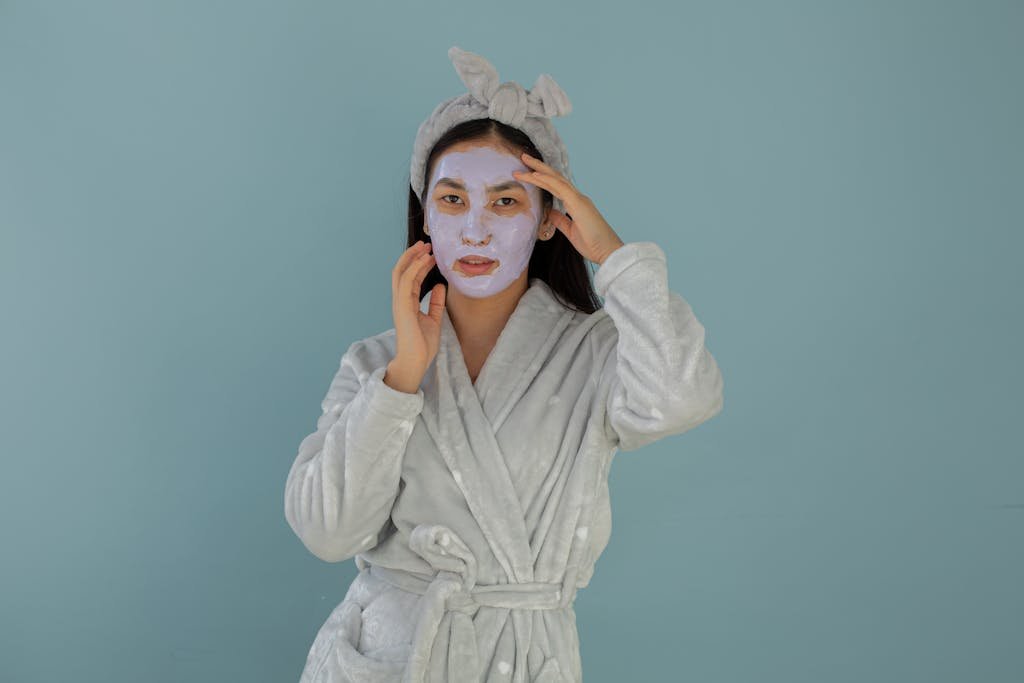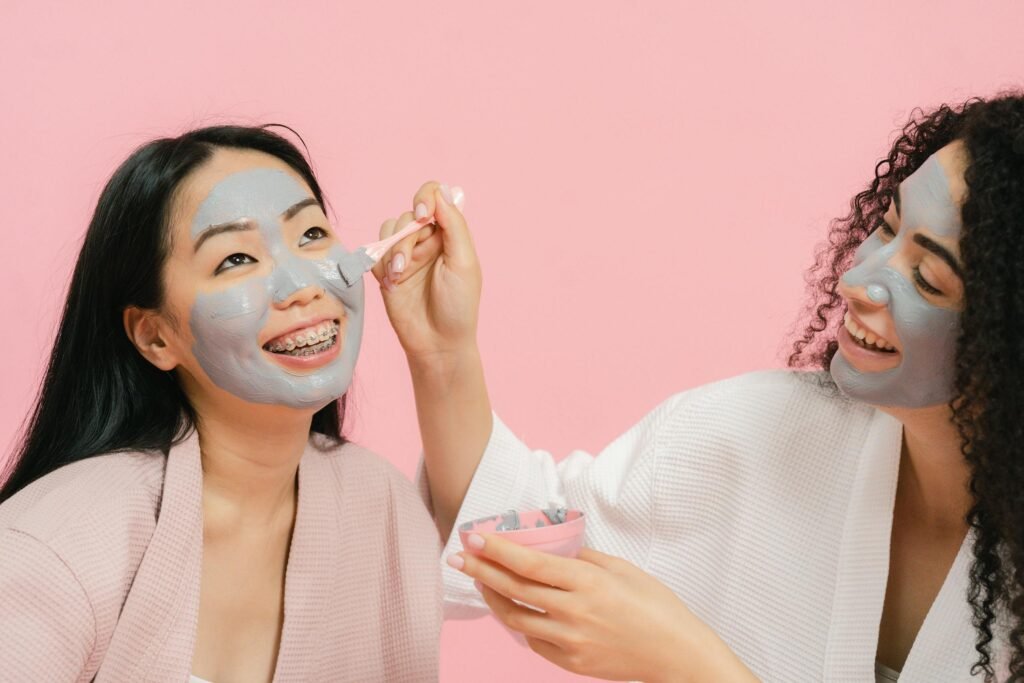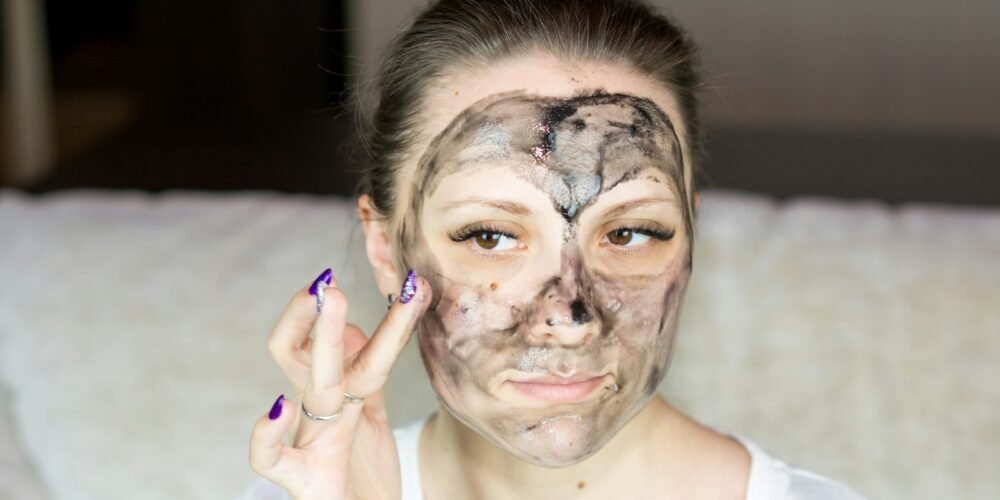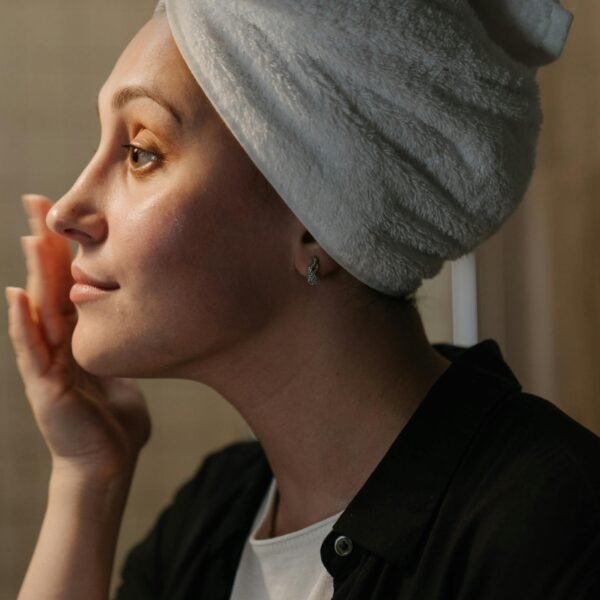I remember the first time I tried a clay mask. My skin was in the midst of a major breakout, and I was desperate for relief. I had heard so many rave reviews about clay masks and their supposed benefits for acne-prone skin, so I decided to give it a shot. The cool, soothing sensation as I applied the mask was promising, but do clay masks help with acne? That’s exactly what we’re going to explore today.
In this post, I’ll delve into the science behind their effectiveness. Are they truly the acne-fighting heroes they’re made out to be? Or just another skincare hype? Let’s find out together.
What is Acne?
Acne, oh acne! If you’ve ever faced the pesky bumps and blemishes, you know how frustrating it can be. Acne is a common skin condition that occurs when your hair follicles become clogged with oil and dead skin cells. This blockage can lead to whiteheads, blackheads, or pimples. It often appears on the face, forehead, chest, upper back, and shoulders because these areas have the most oil (sebaceous) glands.
So, what exactly causes these breakouts? There are several factors at play:
- Excess Oil Production: When your skin produces too much oil, it can mix with dead skin cells and clog your pores.
- Clogged Pores: Dead skin cells that aren’t shed properly can build up and clog your hair follicles.
- Bacteria: The bacteria known as Propionibacterium acnes (P. acnes) can grow in clogged pores, leading to inflammation and pimples.
- Inflammation: When your body reacts to the bacteria and clogged pores, it can result in red, swollen pimples.
Factors Contributing to Acne
Acne is not just about having oily skin or clogged pores. Several other factors can contribute to those unwanted breakouts:
- Hormones: Hormonal changes, especially during puberty, pregnancy, or menstrual cycles, can trigger or worsen acne.
- Diet: While the relationship between diet and acne isn’t fully understood, certain foods like dairy products and high-glycemic foods can contribute to breakouts in some people.
- Stress: High stress levels can increase the production of hormones like cortisol, which can make acne worse.
- Skincare Routines: Using products that are too harsh or not suited for your skin type can irritate the skin and lead to breakouts. It’s important to use non-comedogenic products that won’t clog pores.
- Gut Health: An imbalance in gut bacteria can lead to inflammation throughout the body, including the skin. Poor gut health has been linked to a variety of skin conditions, including acne.

What are Clay Masks?
When considering acne treatments, many wonder, Do clay masks help with acne? To address this, let’s review the types of clay masks available, their properties, and how they might benefit acne-prone skin.
Types of Clays
Let’s dive into the world of clay masks! These masks are made from various types of clay, each with unique properties that can benefit your skin in different ways. Here are some of the most popular types:
- Bentonite Clay: Known for its powerful absorbent properties, bentonite clay can draw out impurities and excess oil from the skin. It’s especially beneficial for oily and acne-prone skin.
- Kaolin Clay: A gentler clay, kaolin comes in different colors—white, yellow, red, and pink—each with varying levels of absorbency. White kaolin is the mildest, making it ideal for sensitive skin, while red kaolin is more absorbent and better suited for oily skin.
- French Green Clay: This clay is rich in minerals and has a high absorbency rate, making it excellent for detoxifying the skin. It’s often used to treat acne and oily skin types.
Properties of Clay
So, what makes these clays so special for skincare? Here are the key properties that make clay masks a popular choice:
- Absorbent: Clays have a natural ability to absorb excess oil and impurities from the skin. This helps to unclog pores and prevent the formation of acne.
- Detoxifying: Clays can draw out toxins and pollutants from the skin, leaving it feeling clean and refreshed. This detoxifying effect can help reduce inflammation and redness associated with acne.
- Anti-inflammatory: Many clays have soothing properties that can calm irritated skin. This is particularly beneficial for acne-prone skin, which often suffers from inflammation and redness.
Popular Clay Mask Products
There are many clay masks on the market, each with its own blend of ingredients and benefits. Here are a few popular ones that have garnered positive reviews:
- Aztec Secret Indian Healing Clay: Made from 100% natural calcium bentonite clay, this mask is known for its deep pore-cleansing abilities. It’s a favorite for those with oily and acne-prone skin.
- Innisfree Super Volcanic Pore Clay Mask: This mask contains Jeju volcanic clusters, which are known for their absorbent properties. It’s great for controlling oil and refining pores.
- L’Oréal Paris Pure-Clay Mask: Available in several formulations, including detox and brighten, exfoliate and refine, and clear and comfort, these masks use different types of clay to address various skin concerns.
How Clay Masks Work
Absorbing Excess Oil
Let’s talk about one of the main reasons we love clay masks: their ability to absorb excess oil. If you have oily or acne-prone skin, this can be a game-changer. When you apply a clay mask, it works like a sponge, soaking up the extra sebum that can clog your pores and lead to breakouts.
The clay’s fine particles penetrate deep into your skin, pulling out the oil that’s hiding in your pores. This not only helps to keep your skin looking matte and fresh but also prevents those annoying pimples from popping up.
Detoxifying the Skin
Clay masks are also fantastic for detoxifying the skin. Over time, our skin accumulates impurities from pollution, makeup, and other environmental factors. These toxins can lead to dullness and breakouts.
But here’s where clay comes to the rescue! When you put on a clay mask, it binds to these impurities and draws them out of your skin. Think of it like a magnet for toxins.
By the time you rinse off the mask, your skin feels cleaner, fresher, and more vibrant. It’s like giving your face a deep-cleaning spa treatment right at home.
Anti-inflammatory Effects
One of the lesser-known but equally important benefits of clay masks is their anti-inflammatory properties. Acne-prone skin often deals with redness, irritation, and inflammation.
The minerals found in clays, such as magnesium, calcium, and silica, have soothing properties that can calm irritated skin.
When you apply a clay mask, it helps to reduce redness and swelling, giving your skin a more even tone and texture. This can be especially beneficial after a breakout, as it aids in the healing process and reduces the visible signs of inflammation.

Do Clay Masks help with Acne?
The key question remains: Do clay masks help with acne? Let’s review scientific evidence to evaluate their effectiveness. While clay masks can be beneficial, it’s crucial to also consider their limitations.
Scientific Evidence
When it comes to tackling acne, it’s always reassuring to have science on our side. Various studies have shown that clay masks can be effective in managing acne. For instance, research has highlighted the absorbent properties of clays like bentonite and kaolin, which help in reducing oiliness and preventing clogged pores.
One study found that regular use of clay masks can significantly reduce the number of acne lesions due to their ability to absorb sebum and draw out impurities from the skin.
Experts in dermatology often recommend clay masks as part of a comprehensive acne treatment plan, especially for those with oily and combination skin types.
Limitations
Of course, no skincare solution is without its limitations, and clay masks are no exception. While they are great at absorbing oil and detoxifying the skin, they can also be quite drying, especially if used too frequently.
If you have sensitive or dry skin, you might need to limit your use to avoid over-drying your skin.
Additionally, clay masks are not a cure-all for severe acne. They work best as a part of a holistic skincare routine. Lastly, it’s important to patch-test new products to ensure you don’t have an allergic reaction to any of the ingredients.
Personal Testimonials
Let’s get a bit personal here. My journey with acne has been a rollercoaster, and clay masks have been one of the consistent allies in my skincare routine.
I remember the first time I used a bentonite clay mask—my skin felt incredibly clean and refreshed.
Over time, I noticed a significant reduction in oiliness, but honestly haven’t used it long enough to say if it has had a positive effect on my acne.
How to Use Clay Masks Effectively
Choosing the Right Mask
When it comes to picking a clay mask, one size does not fit all. Here’s how to choose the perfect mask for your skin type and acne severity:
- For Oily Skin: Opt for masks with bentonite or French green clay. These types are highly absorbent and great at managing excess oil and reducing shine.
- For Dry or Sensitive Skin: Look for masks with kaolin clay, which is gentler and less likely to strip your skin of its natural oils. Kaolin clay can help with acne without causing excessive dryness.
- For Combination Skin: You might benefit from a mask that combines different types of clay. For example, a mask that blends bentonite and kaolin clay can address both oiliness and sensitivity.
Application Tips
Applying a clay mask correctly can make all the difference in your results. Follow these steps for the best outcome:
- Cleanse Your Skin: Start with a clean face. Use your regular cleanser to remove any makeup and impurities.
- Apply the Mask: Using clean fingers or a brush, apply a thin, even layer of the clay mask to your face. Avoid the delicate eye area and lips.
- Relax and Wait: Let the mask sit for 10-15 minutes. You’ll notice it start to dry and tighten on your skin.
- Rinse Off: Gently remove the mask with lukewarm water. You can use a damp washcloth for better removal.
- Moisturize: Follow up with a gentle moisturizer to replenish any lost hydration.
Frequency of Use
To get the most benefit from your clay mask without over-drying your skin, consider the following recommendations:
- Oily and Acne-Prone Skin: Using a clay mask 2-3 times a week can help manage excess oil and prevent breakouts. Just be sure to monitor how your skin reacts and adjust as needed.
- Dry or Sensitive Skin: Limit use to once a week to avoid over-drying. If you notice any signs of irritation, reduce the frequency even further.
- Combination Skin: Start with once a week and increase to twice a week if your skin tolerates it well.
When to Seek Professional Help
While clay masks and a solid skincare routine can make a significant difference, sometimes acne requires professional intervention. Consider seeing a dermatologist if dealing with persistent or severe Acne.
Conclusion
In summary, do clay masks help with acne? Yes, they do.
Clay masks can be a great addition to your skincare routine, helping to absorb oil, detoxify, and soothe inflamed skin. However, they may not solve every acne issue and could cause dryness if overused. It’s essential to choose the right mask and use it correctly.
Give clay masks a try and see how they work for you. Each person’s skin is unique, so experiment and find what suits you best. I’d love to hear your experiences—please share your thoughts and stories in the comments.





Leave a Reply